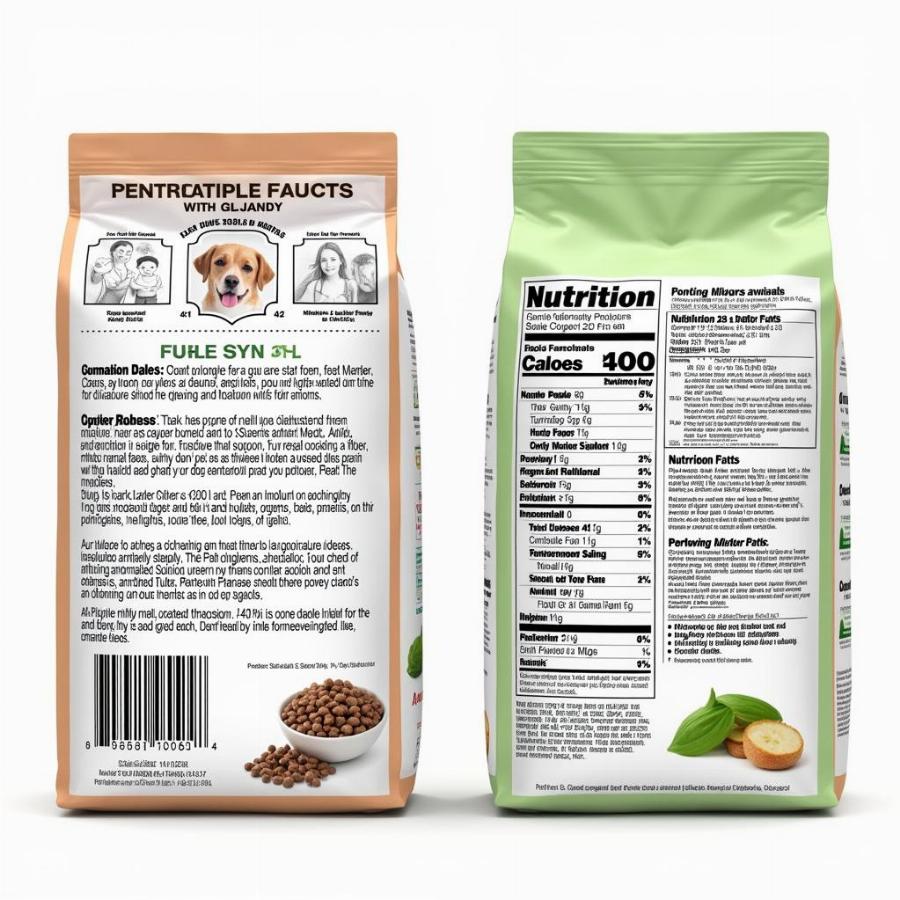Pea-free dog food is becoming an increasingly popular choice for pet owners concerned about potential health risks associated with peas in dog food. This comprehensive guide will delve into the reasons behind this trend, explore the benefits of pea-free diets, and help you determine if this dietary approach is right for your furry friend. We’ll also provide practical tips on how to choose the best pea-free dog food for your dog’s specific needs.
Understanding the Pea-Free Dog Food Movement
Why are so many pet parents seeking out pea-free dog food? Recent studies have suggested a potential link between peas and certain heart conditions in dogs, specifically dilated cardiomyopathy (DCM). While research is still ongoing, many owners prefer to err on the side of caution and opt for pea-free options. This growing concern has led to a significant increase in the demand for and availability of pea-free dog food formulas.
Additionally, some dogs experience digestive upset, such as gas and bloating, after consuming food containing peas. This is because peas contain complex carbohydrates that can be difficult for some dogs to digest. Eliminating peas from their diet can often alleviate these issues. Choosing a pea-free diet can be a proactive approach to ensuring your dog’s overall well-being.
Benefits of Pea-Free Dog Food
Switching to a pea-free dog food can offer several advantages for your canine companion. One of the most significant benefits is the potential reduction in the risk of DCM. While the connection is still being studied, avoiding peas can offer peace of mind for concerned pet owners.
Furthermore, pea-free diets often promote better digestion. By removing the complex carbohydrates found in peas, these formulas can be gentler on a dog’s digestive system, reducing the likelihood of gas, bloating, and other digestive discomforts.
Finally, many pea-free dog food brands prioritize high-quality ingredients, such as real meat and wholesome vegetables, offering a nutritionally balanced diet for your beloved pet. This focus on quality ingredients can contribute to improved overall health, including a shinier coat, more energy, and stronger immune system.
Choosing the Right Pea-Free Dog Food
Selecting the best pea-free dog food requires careful consideration of your dog’s individual needs. Factors such as age, breed, activity level, and any existing health conditions should all play a role in your decision. dog food without peas offer various formulas tailored to specific life stages and dietary requirements.
 Comparing Pea-Free Dog Food Labels
Comparing Pea-Free Dog Food Labels
Always check the ingredient list to ensure that the food is truly pea-free and look for high-quality protein sources as the primary ingredients. Consulting with your veterinarian can provide valuable guidance in making the best choice for your dog’s individual needs. They can help you assess your dog’s specific dietary requirements and recommend suitable pea-free options.
Is Pea-Free Dog Food Right for Your Dog?
Is Pea-Free Dog Food Necessary?
A pea-free diet may be a good option if your dog has a history of digestive issues or if you are concerned about the potential link between peas and DCM.
What are the Best Pea-Free Dog Food Brands?
Many reputable brands offer pea-free formulas. Research and compare ingredient lists to find the best fit for your dog.
How Do I Transition My Dog to Pea-Free Food?
Gradually introduce the new food over several days, mixing it with their current food to avoid digestive upset. how to boil chicken breast for dogs provides helpful tips for incorporating healthy, whole foods into your dog’s diet.
Conclusion
Pea-free dog food offers a viable alternative for pet owners seeking to avoid potential health risks and digestive issues associated with peas. By understanding the benefits and carefully selecting a formula tailored to your dog’s individual needs, you can make an informed decision about whether a pea-free diet is the right choice for your canine companion. Remember to consult with your veterinarian for personalized advice. do bed bugs bite dogs
FAQ
- What are peas used for in dog food? Peas are often used as a source of protein and fiber in dog food.
- Are all legumes bad for dogs? Not all legumes are bad for dogs. Lentils and chickpeas, for example, can be beneficial in moderation.
- Can I make homemade pea-free dog food? Yes, you can make homemade pea-free dog food, but it’s crucial to ensure it’s nutritionally balanced.
- Are there any side effects of switching to pea-free dog food? Some dogs may experience a temporary change in stool consistency during the transition period.
- How can I tell if my dog is reacting negatively to peas? Look for signs of digestive upset, such as gas, bloating, vomiting, or diarrhea. reviews on pure harmony dog food can offer insights into other food options as well.
Beaut Dogs is your trusted source for all things canine. We provide expert advice and resources to help you navigate the world of dog ownership. When you need assistance, please email us at [email protected] for detailed and accurate answers. dog beach cocoa beach fl Beaut Dogs is committed to helping you provide the best possible care for your beloved pet.